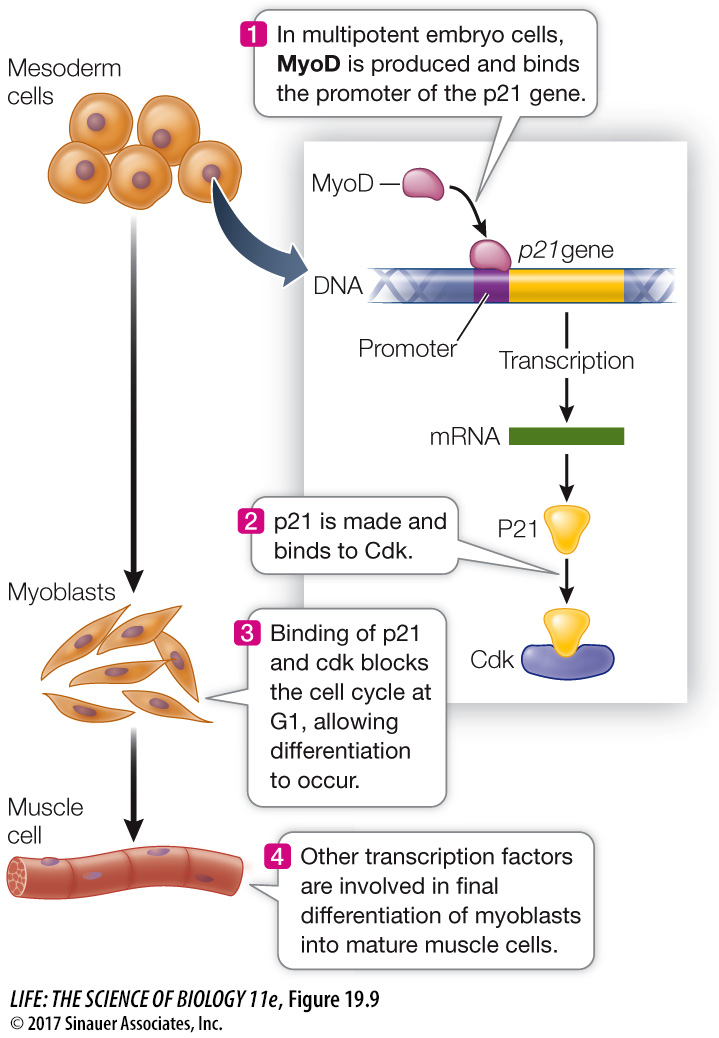One well-studied example of cell differentiation is the conversion of undifferentiated muscle precursor cells into cells destined to form muscle (Figure 19.9). In the vertebrate embryo these cells come from a tissue layer called the *mesoderm. A key event in the commitment of these cells to become muscle is that they stop dividing. Indeed, in many parts of the embryo, cell division and cell differentiation are mutually exclusive. Cell signaling activates the gene for a transcription factor called MyoD (for myoblast-determining gene); this in turn activates the gene for p21, which is an inhibitor of the cyclin-dependent kinases (Cdk’s) that normally stimulate the cell cycle at G1 (see Figure 11.5). Expression of the p21 gene causes the cell cycle to stop, and other transcription factors then enter the picture so that differentiation can proceed. Interestingly, MyoD is also activated in the stem cells that are present in adult muscle, indicating a role of this transcription factor in the repair of muscle tissue as it gets damaged and worn out.
Genes such as myoD that direct the most fundamental decisions in development (often by regulating other genes on other chromosomes) usually encode transcription factors. In some cases a single transcription factor can cause a cell to differentiate in a certain way. In others, complex interactions between genes and proteins determine a sequence of transcriptional events that leads to differentiation.
